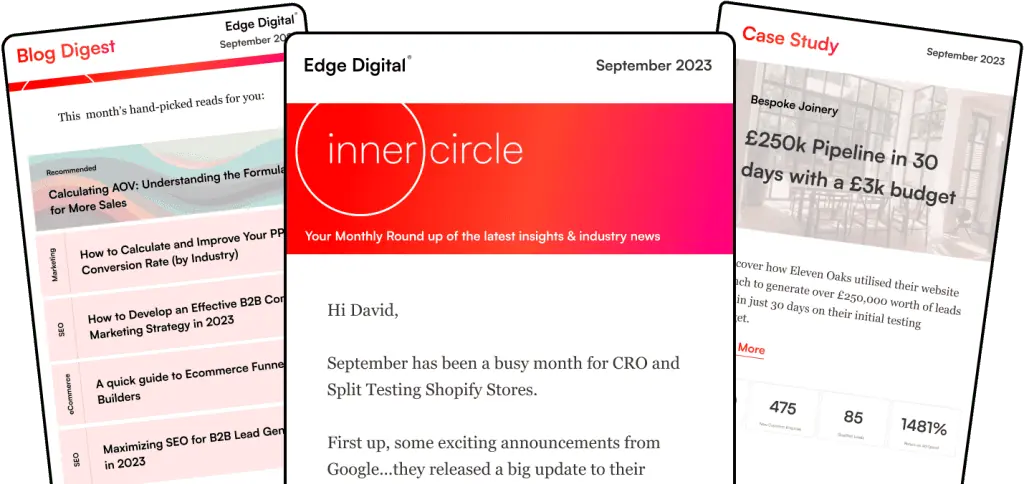In today’s competitive market, striking the right balance between “direct response marketing vs branding” is crucial for businesses to thrive. But how can you ensure your marketing efforts cater to both short-term sales objectives and long-term customer loyalty? This blog post will provide you with a fresh perspective on the topic, unraveling the secrets of successful marketing strategies that seamlessly blend direct response marketing and branding, leading to a successful direct response campaign.
Key Takeaways
Direct response marketing and branding are essential components of a balanced marketing strategy.
Both strategies have different focuses, metrics for success, and require optimization to achieve optimal results.
Combining direct response elements with brand identity can lead to quick sales as well as long term customer loyalty.
Understanding Direct Response Marketing
Direct response marketing, renowned for its power, aims to spark immediate action from prospects and yield measurable outcomes. Direct marketing is a key component of direct response marketing, focusing on promoting products and services to elicit immediate action. This strategy focuses on encouraging prospects to respond at once, thereby assuring the effective use of every marketing dollar and the generation of visible results. On the other hand, brand marketing nurtures long-term relationships and loyalty with customers, aiming to create an emotional bond that lasts far beyond a single transaction.
While both strategies serve different purposes, they ultimately complement each other in a robust marketing plan. Experts recommend that small to medium-sized businesses dedicate 80% of their marketing budget to direct response ads and the remaining 20% to branding. Such allocation guarantees that businesses enjoy the swift and measurable benefits of direct response marketing while simultaneously investing in enduring brand-building endeavors.
Key Components of Direct Response Marketing: Target Audience
The key elements of direct response marketing, sometimes called direct response advertising, are compelling calls-to-action, tailored targeting, and trackable results. Direct response marketing channels, such as Google Ads, are effective in reaching a wider audience and generating direct responses from prospects. By understanding and applying direct response principles, an effective direct response ad should have a precise and unambiguous call-to-action, clearly communicating the desired action for the audience. For example, “Receive up to 60% off!” or “Download immediately!” are strong calls-to-action that encourage immediate engagement.
Personalized targeting plays a vital role in direct response marketing. By utilizing data from customer interactions, profiles, and feedback, businesses can customize marketing messages for each customer. This creates a more individualized experience, resulting in greater engagement, loyalty, and improved outcomes for the business, as opposed to generic brand advertising.
Benefits of Direct Response Marketing: Call to Action
Direct response marketing offers a plethora of advantages for businesses. It is known for rapid sales, immediate response from the target audience, cost-efficiency, and the capacity to modify campaigns based on market feedback. For small to medium-sized companies, direct response marketing campaigns can result in accelerated sales, making it an attractive strategy when compared to traditional branding efforts that may take longer to show returns.
Cost-effectiveness is another significant benefit of direct response marketing. By focusing on driving specific actions and targeting the right audience, businesses can avoid unnecessary expenditure on advertising to audiences unlikely to be interested in their product or service. This targeted approach requires a smaller budget and fewer resources compared to digital marketing, making it a more cost-efficient alternative to traditional marketing channels.

By identifying your target audience not only will you drive more sales, but you will waste less time and budget and have better ROI
Grasping the Essence of Brand Marketing
Brand marketing, also known as branding advertising, is all about developing a distinct identity for a company, cultivating emotional connections with customers, and advertising a particular lifestyle or promise. The ultimate objectives of a branding campaign involve increasing brand recognition, fostering brand loyalty, and creating a distinct and impacting message through an effective marketing campaign.
While it may not provide immediate sales like direct response marketing, the long-term benefits of brand marketing are undeniable, as they contribute to a company’s overall value and reputation in the eyes of consumers.
Establishing a Brand Identity
Creating a brand identity requires a clear understanding of the company’s values, target audience, and market positioning. By comprehending the target audience, a brand can construct a brand identity that is recognizable, long-lasting, and distinct from competitors. This helps create a strong emotional connection with the target audience, resulting in enhanced brand loyalty, customer engagement, and eventually, business success.
A well-defined brand identity is essential for effectively communicating the unique qualities of the brand to the target audience in a meaningful and beneficial way. By showcasing these qualities, businesses can create a strong brand image that resonates with their target audience and sets them apart from the competition.
The Impact of Brand Marketing on Customer Loyalty
The positive effects of brand marketing on customer loyalty cannot be underestimated. By fostering emotional connections, raising brand awareness, and distinguishing the company from competitors, brand marketing can significantly impact customer loyalty. Well-known brands like Coca-Cola, Red Bull, and Toyota have achieved success through effective brand marketing.
Successful brands like Trader Joe’s and Coca-Cola have cultivated their brand equity, which has ultimately led to increased customer loyalty and profitability in the long run. This clearly demonstrates the importance of brand marketing and its impact on customer loyalty, which can drive sustainable business growth.
Comparing Direct Response Marketing and Branding
When comparing direct response marketing and branding, it’s essential to understand their distinct focuses. Direct response campaigns involve choosing the right marketing channels and best practices to drive immediate action. Direct response marketing concentrates on short-term objectives and immediate outcomes, prompting customers to take action right away. In contrast, branding emphasizes long-term customer relationships and loyalty, cultivating an emotional connection with customers that lasts far beyond the initial purchase.
While both strategies have their merits, finding the right balance between them is crucial for businesses to achieve both short-term sales and long-term customer loyalty.
Short-Term vs Long-Term Focus
The short-term focus of direct response marketing can lead to quick sales and immediate results, making it an attractive strategy for businesses looking to drive revenue in the short term. By employing strategies such as targeted advertising, lead generation techniques, and programmatic advertising, a successful direct response campaign targets specific audiences with relevant ads at the right time, effectively driving instant sales.
On the other hand, the long-term focus of branding can result in higher profits, increased brand equity, and customer retention over time. By investing in long-term branding strategies, businesses can foster emotional connections with their customers, which can lead to increased brand loyalty and sustained business growth.
Measuring Success in Both Strategies
Measuring success in both direct response marketing and branding strategies involves different metrics. Direct response marketing examples can guide businesses in creating effective campaigns that elicit immediate responses. For direct response marketing, success can be gauged by observing response rates, conversions, and sales. This data-driven approach allows businesses to optimize their marketing strategies and allocate their budget more effectively.
On the other hand, success in branding can be evaluated by tracking brand awareness, loyalty, and customer sentiment. Although these metrics may not provide immediate, quantifiable results like direct response marketing, they are essential for understanding the long-term impact of branding efforts on customer loyalty and overall business growth, as well as brand perception.

Correctly tracking and measuring success will lead to better conversions
Finding the Right Balance for Your Business
As mentioned earlier, finding the right balance between direct response marketing and branding depends on a company’s specific goals, target audience, and resources. Integrating elements of a direct response marketing campaign can help achieve both immediate sales and long-term loyalty. While both strategies serve different purposes, they ultimately complement each other in a successful marketing plan.
We will delve into the factors that should be contemplated when striking the right balance and offer examples of successful businesses that have executed a hybrid marketing approach.
Factors to Consider
When determining the right balance between direct response marketing and branding, factors such as budget, time to sale, measurability, and the ability to improve marketing efforts should be considered. A company’s budget can significantly affect the balance between the two strategies, with larger budgets providing more funding for branding efforts, and smaller budgets prioritizing direct response marketing for immediate sales and quantifiable results.
Measurability plays a crucial role in finding the right balance, as it enables businesses to track the efficacy and ROI of their marketing efforts. By measuring the impact of both direct response marketing and branding, businesses can find the right balance that aligns with their goals and maximizes marketing outcomes.
Case Studies: Successful Businesses Using Both Strategies
Several businesses have successfully implemented a hybrid marketing strategy, demonstrating the importance of integrating direct response and branding elements. Businesses use direct marketing campaigns through email and social media to promote purchase incentives and limited-time offers. Companies such as:
Instacart
Casper
Harry’s
BarkBox
Bonobos
Many businesses have achieved success through the implementation of both direct response and brand marketing strategies, as well as utilizing sales promotions.
Apple is another prime example of a company that has expertly integrated direct response and branding elements in their marketing strategies. They focus on creating a unique image that conveys a strong sense of innovation while establishing an emotional connection with their customers. Apple leverages digital platforms, experiential marketing, and influencer marketing to reach and engage with their target audience, ultimately driving both immediate sales and long-term brand loyalty.
Small businesses using a hybrid approach, can be very effective by combining traditional and digital marketing tactics to reach their target audience and drive business growth. Businesses of all sizes can benefit from adopting a balanced approach between direct response marketing and branding.
Tips for Implementing a Hybrid Marketing Strategy
A hybrid marketing strategy necessitates the amalgamation of direct response and branding components, coupled with constant monitoring and optimization of marketing initiatives for optimal results. Direct mail can be an effective tool in direct response marketing by reaching target customers and driving immediate action. We will dispense advice on the effective integration of direct response and branding elements, and on the monitoring and enhancement of your marketing initiatives to facilitate data-driven decisions and continual improvement of your marketing strategies.
Integrating Direct Response and Branding Elements
The integration of direct response and branding elements enables businesses to attain both immediate sales targets and prolonged customer loyalty. When merging these elements in your marketing plan, consider important steps such as:
Defining your brand identity
Comprehending your target audience
Preserving brand consistency
Capitalizing on suitable channels
Furthermore, businesses should ensure that their direct response marketing messages align with their brand messaging to maintain consistency and reinforce their brand identity. By following these tips and incorporating both direct response and branding elements into your marketing strategy, businesses can effectively reach their target audience, drive sales, and foster long-term customer loyalty.
Tracking and Optimizing Your Marketing Efforts
Tracking and optimizing marketing efforts is crucial for making data-driven decisions and consistently refining marketing strategies. By monitoring campaigns, analyzing customer data, testing various strategies, and adjusting the approach as necessary, businesses can ensure that their marketing efforts are as effective as possible.
Several tools can be utilized for tracking and optimizing marketing efforts, including:
Google Analytics
Hootsuite
SEMrush
Mailchimp
Ahrefs
By leveraging these tools, businesses can gain valuable insights into the performance of their marketing campaigns, enabling them to make informed decisions, allocate resources effectively, and continuously improve their marketing strategies.
Summary
In conclusion, finding the right balance between direct response marketing and branding is essential for businesses to achieve both short-term sales objectives and long-term customer loyalty. By understanding the differences between these marketing strategies, considering factors such as budget, time to sale, measurability, and the ability to improve marketing efforts, and learning from successful case studies, businesses can develop a comprehensive marketing approach that combines the best of both worlds. Implementing a hybrid marketing strategy and continuously tracking and optimizing marketing efforts will ensure that businesses can make data-driven decisions and achieve sustainable growth in today’s competitive market.
Frequently Asked Questions
What is the difference between brand marketing and direct response?
Direct response marketing is aimed at converting customers and getting them to take immediate action, whereas brand marketing aims to create loyalty by building an emotional connection with the customer. As Jason Falls puts it, direct response helps people buy, while brand marketing helps people choose.
What is the difference between branding and marketing strategy?
Branding is the long-term promise made to customers and the story behind why a company exists, while marketing outlines the shorter-term actions used to communicate key messages with customers. Both strategies should be used together to ensure success and build awareness for the brand.
What is the opposite of direct response marketing?
Direct response marketing asks for a sale when a customer is searching for a solution, while indirect response marketing creates brand recognition and positive opinions in order to influence a potential customer’s purchase decision.
How can a business find the right balance between direct response marketing and branding?
Businesses should take into account their goals, target audience, budget, time to sale, measurability, and ability to improve marketing efforts when deciding the right balance between direct response marketing and branding.
What are the key components of direct response marketing?
Direct response marketing involves using compelling calls-to-action, tailored targeting, and trackable results to achieve desired objectives.



